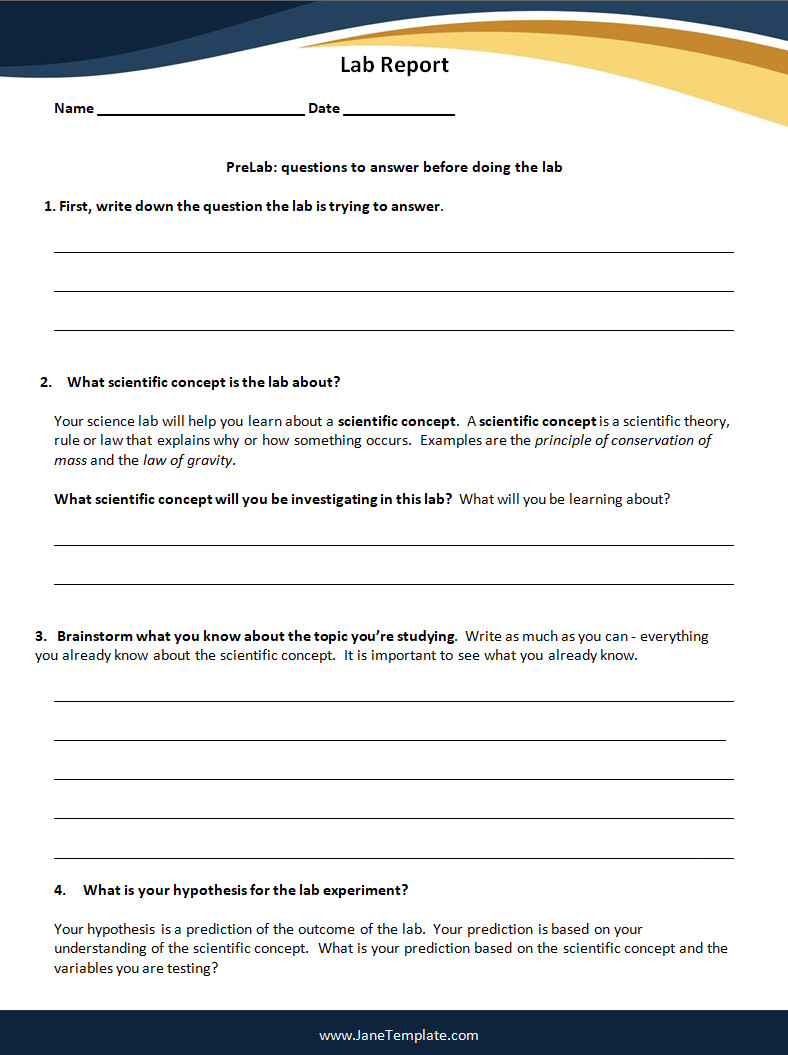In the realm of scientific research, lab reports play a crucial role in communicating the methodology and findings of experiments. These reports serve as a bridge between the researcher and the scientific community, allowing others to understand, reproduce, and verify the results of a study.

A well-written lab report demonstrates the writer’s grasp of the scientific method, presenting the experiment’s aim, methods, results, and conclusions in a clear, organized, and reproducible manner.
What Is A Lab Report?
A lab report is a detailed document that outlines the process and results of a scientific experiment. It serves as a written record of the procedures followed, the data collected, and the outcomes observed during the study. Lab reports are typically structured in a specific format, which may vary depending on the discipline or the requirements of the institution.
When writing a lab report, it is essential to provide enough detail for the reader to understand the experiment’s purpose, methodology, and findings. The report should be concise, yet thorough, and should follow a logical sequence that guides the reader through the study from start to finish.
What Is The Purpose Of A Lab Report?
The primary purpose of a lab report is to communicate the results of a scientific experiment in a clear and organized manner. By documenting the procedures, data, and outcomes of the study, a lab report allows other researchers to assess the validity of the findings and build upon the research in the future.
Importance of Clear Communication
Clear communication is essential in a lab report to ensure that the reader understands the experiment’s purpose, methods, and results. By using simple and concise language, the writer can convey complex scientific information in a way that is accessible to a broader audience. Clear communication also helps to avoid misunderstandings and misinterpretations of the data presented in the report.
Verification and Reproducibility
One of the key purposes of a lab report is to allow other researchers to verify and reproduce the findings of a study. By providing detailed information about the experiment’s methodology and results, the writer enables others to replicate the study and obtain similar outcomes. This verification process is crucial in building trust and confidence in the scientific community, as it ensures that the research is credible and reliable.
Contribution to Scientific Knowledge
Lab reports play a significant role in contributing to the advancement of scientific knowledge in a particular field. By documenting the procedures, results, and conclusions of an experiment, the writer adds to the body of existing research and helps to expand our understanding of the natural world. Lab reports provide a valuable resource for future studies and allow researchers to build upon previous work to make discoveries.
Evaluation of Experimental Design
Another purpose of a lab report is to evaluate the experimental design and methodology used in the study. By detailing the procedures followed and the techniques employed, the writer allows readers to assess the validity and reliability of the experiment. This evaluation helps to identify any potential flaws or limitations in the study, providing insights for future research and improving experimental practices.
Key Elements of a Lab Report
- Title Page: The title page includes the title of the experiment, the names of the author(s), the date of the experiment, and the name of the institution.
- Abstract: The abstract provides a brief summary of the experiment, including the purpose, methods, results, and conclusions.
- Introduction: The introduction outlines the background information and objectives of the experiment, as well as any relevant theories or previous studies.
- Methods: The methods section describes the procedures followed during the experiment, including materials used, data collection methods, and any calculations performed.
- Results: The results section presents the data collected during the experiment, often in the form of tables, graphs, or figures.
- Discussion: The discussion section interprets the results of the experiment, analyzes any trends or patterns observed, and explains the significance of the findings in relation to the research question.
How To Write A Lab Report
1. Start with a clear objective: Before experimenting, clearly define the research question or hypothesis you want to investigate.
2. Follow a structured format: Organize your lab report into sections, such as introduction, methods, results, and discussion, to ensure a logical flow of information.
3. Be concise and specific: Use clear and concise language to describe the procedures, results, and conclusions of the experiment. Avoid unnecessary details or jargon.
4. Include visual aids: Use tables, graphs, and figures to present data in a clear and visually appealing way. Make sure to label all visual aids appropriately.
5. Analyze and interpret the results: In the discussion section, analyze the data collected during the experiment, interpret any patterns or trends, and discuss the implications of the findings.
6. Proofread and revise: Before submitting your lab report, carefully proofread the document for any errors or inconsistencies. Make sure all information is accurate and presented in a logical manner.
By following these steps and guidelines, you can create a well-structured and informative lab report that effectively communicates your scientific research to a wider audience. Remember that the goal of a lab report is not only to document your findings but also to contribute to the advancement of scientific knowledge in your field.
Lab Report Template
A lab report is a useful tool for organizing experiments, observations, and results in a clear and structured format. It helps students and professionals document objectives, methods, data, and conclusions accurately, ensuring consistency and professionalism.
To simplify your scientific writing, use our free lab report template and present your findings with clarity!
Lab Report Template – Word